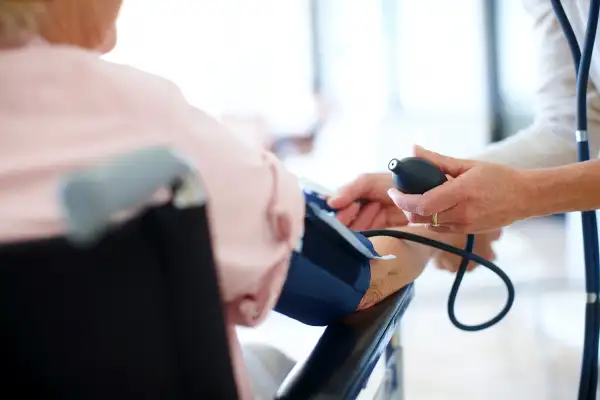Why Your 2017 Medicare Premiums Could Jump 20%

Some Medicare recipients may see their charges for Part B doctor coverage jump more than 20% in January.
The majority of Medicare beneficiaries have nothing to worry about. Most people who have their premiums deducted from their Social Security checks are protected by what’s called the "hold harmless" rule: Their Medicare charges can’t increase by any more than their Social Security income goes up.
But there’s no such protection for people whose income subjects them to higher charges for Part B, which covers doctor visits and other outpatient care. Ditto for Medicare beneficiaries who haven’t yet claimed Social Security and people who will be new to Medicare in 2017.
For instance, people who aren’t receiving Social Security and who pay $121.80 a month for Medicare now may have to pay $149 a month, up 22%, according to estimates in the 2016 annual report issued by Medicare trustees in June. The percentage increase would be the same for people who pay higher premiums because of their income. That could mean a charge of $208.01 a month, up from $170.50, for someone with modified adjusted gross income between $85,000 and $107,000 (or between $170,000 and $214,000 on a joint tax return).
The culprit here is continued low inflation, which also played havoc with Medicare premiums this year. For 2016, there was no Social Security cost of living adjustment (COLA). The Medicare trustees projected a 0.2% COLA for 2017.
By law, Medicare Part B premiums must be deducted from Social Security payments for those receiving benefits from both programs. Normally, the Part B increase would be paid out of the increase in Social Security payments due to the COLA. But this can’t happen when the COLA is zero or too small to cover higher Part B premiums.
When this happens, the hold harmless rule prevents Medicare from raising Part B premiums on about 70% of all beneficiaries. However, Medicare must still collect about 25% of overall Part B expenses from the beneficiaries (with the government paying the rest). With most beneficiaries held harmless, it has no choice but to dun the other 30% for the entire beneficiary piece of increased Part B expenses.
A year ago, the absence of a 2016 COLA froze Part B premiums at $104.90 a month for those who were held harmless. The other group, including low-income beneficiaries whose premiums are paid by state Medicaid programs, faced a premium increase of roughly 50%.
In response to alarm from seniors and advocacy groups, Congress softened that blow by approving a one-time loan of $7.5 billion to Medicare to help defray Part B expenses. Even with this help, Part B premiums still jumped 16% for the group that was not held harmless. For higher-income beneficiaries, the Part B charge can approach $390 a month.
The Part B drama is likely to be repeated this fall, with Medicare expenses for 2017 forecast to rise much more than the projected Social Security COLA.
Read next: The Medicare Quirk That Can Cost You Thousands
The actual 2017 Social Security COLA will be known in mid-October. If the COLA were to be zero again, most people paying $104.90 and people new to Medicare paying $121.80 this year would be held harmless and pay exactly these amounts again in 2017.
But if the COLA does turn out to be 0.2%, things would get very confusing. People held harmless would wind up paying all of that COLA—0.2% of their total Social Security benefit—in higher Medicare Part B premiums. This means that Part B premiums would differ based on a person’s Social Security payment.
For example, a person getting $1,500 a month from Social Security would pay $3 more a month for Part B, while a person getting $2,500 a month would pay $5 more.
Senior advocacy groups already are complaining about the situation for people who are not held harmless. And Congress might well come to the rescue again as it did last year. But Congress is out of session and is not scheduled to return until after the November elections. By then, time will be short to fashion a fix, even assuming there is post-election sentiment to do so.
My opinion: Collecting Part B premiums from Social Security payments is an efficient system. Likewise, Social Security’s hold harmless rule is a valuable safeguard to protect seniors from cuts to what often is their only source of retirement income.
But in a low-inflation world, these two policies don’t work well together. It is unfair for Medicare beneficiaries to pay sharply different Part B premiums solely due to timing differences in their benefit filings. It also will further confuse matters should a small COLA result in people paying different premiums for the same Medicare insurance protection.
Beyond shaping a one-year fix, Congress should fashion a long-term solution to this problem.
Philip Moeller is an expert on retirement, aging, and health. He is co-author of the recently updated New York Times bestseller “Get What’s Yours: The Revised Secrets to Maxing Out Your Social Security” and author of the companion “Get What’s Yours for Medicare: Maximize Your Coverage; Minimize Your Costs,” Reach him at moeller.philip@gmail.com or @PhilMoeller on Twitter.